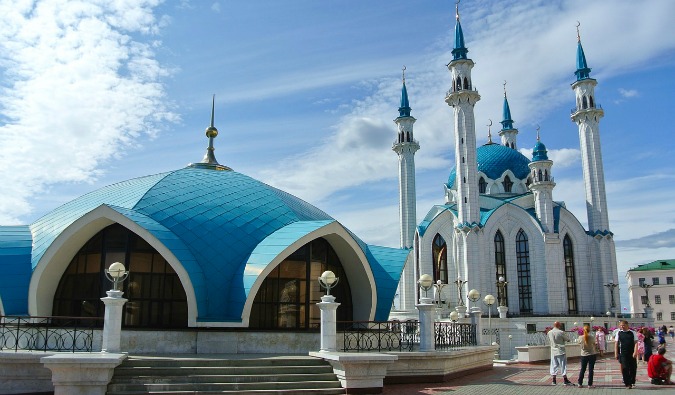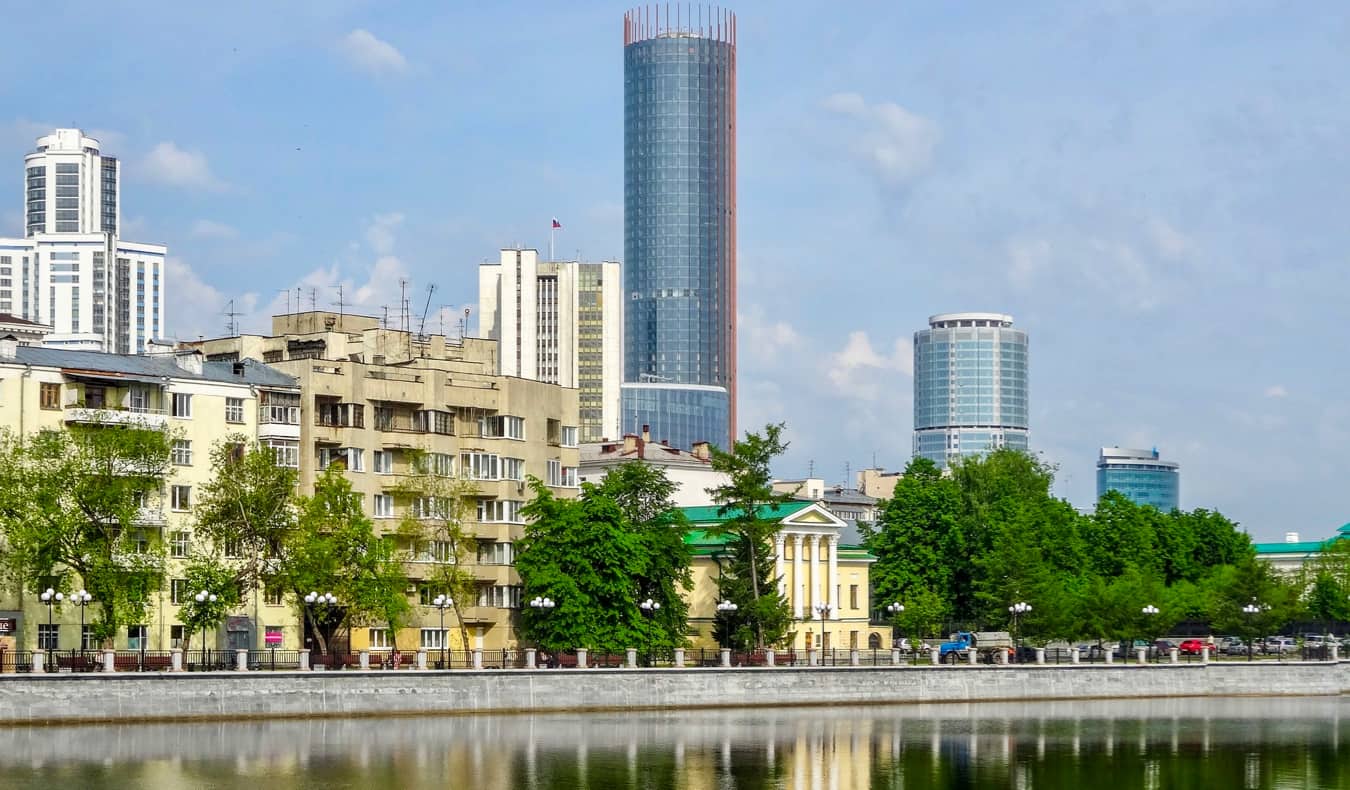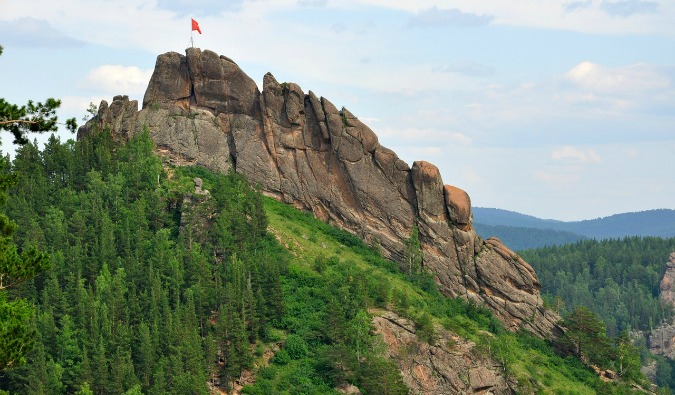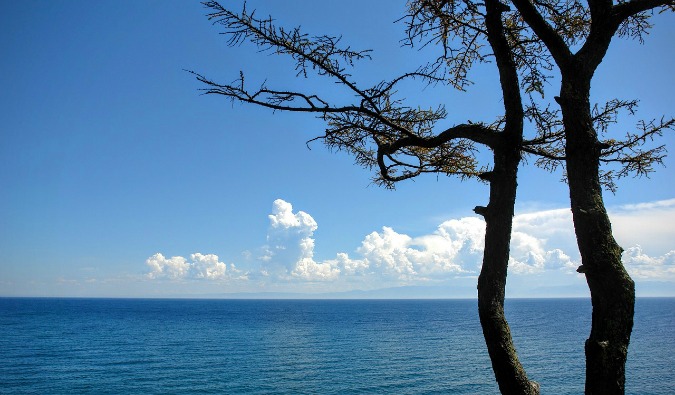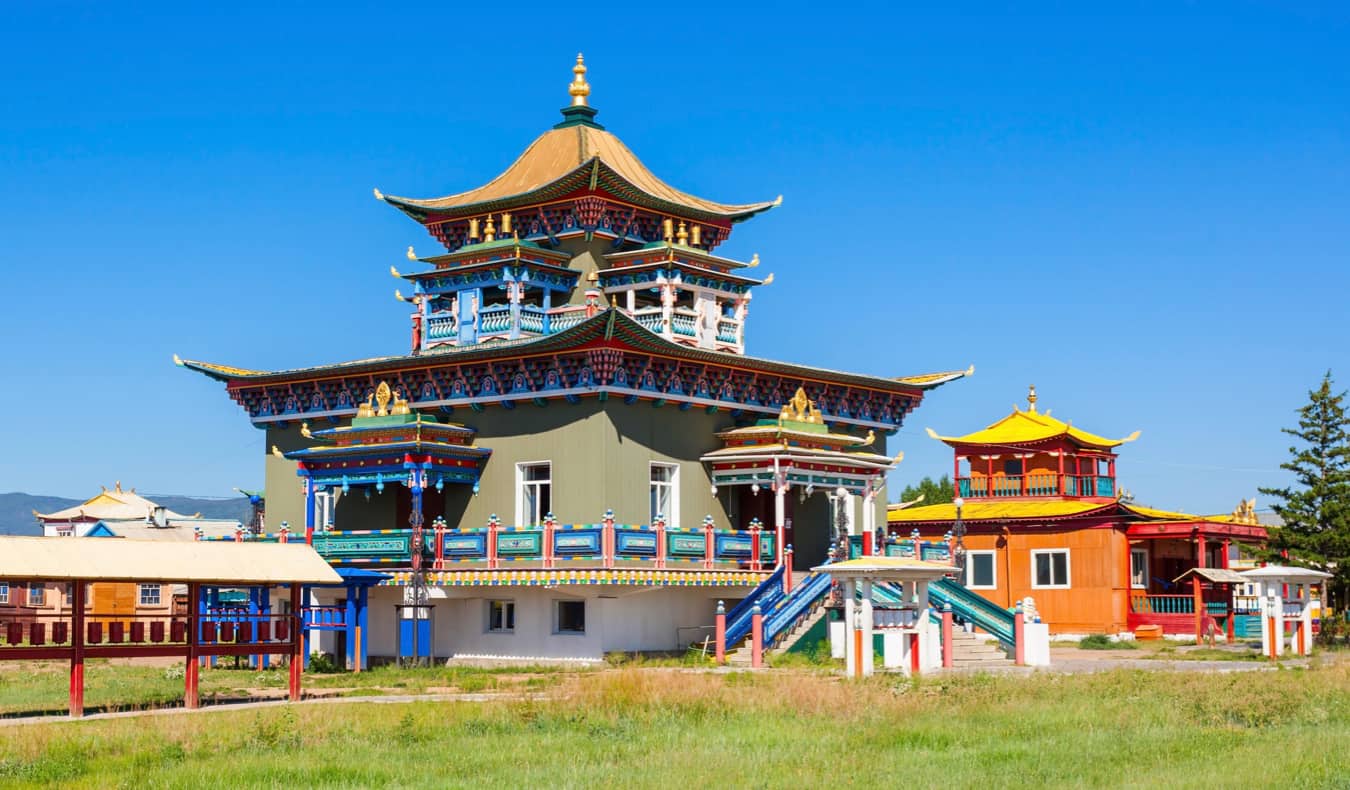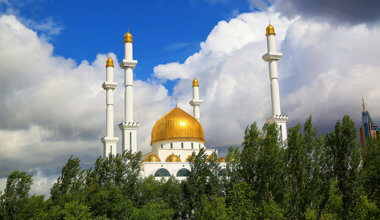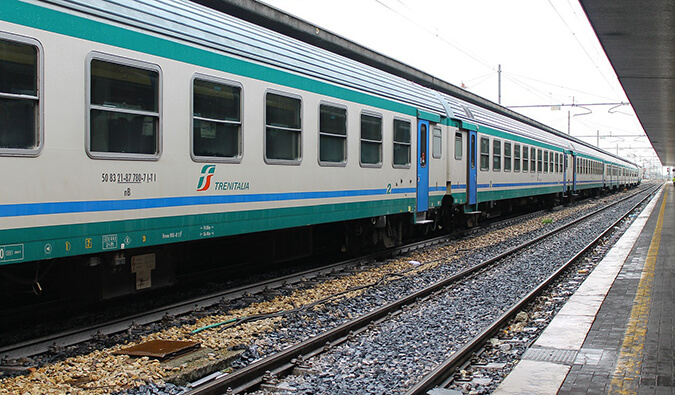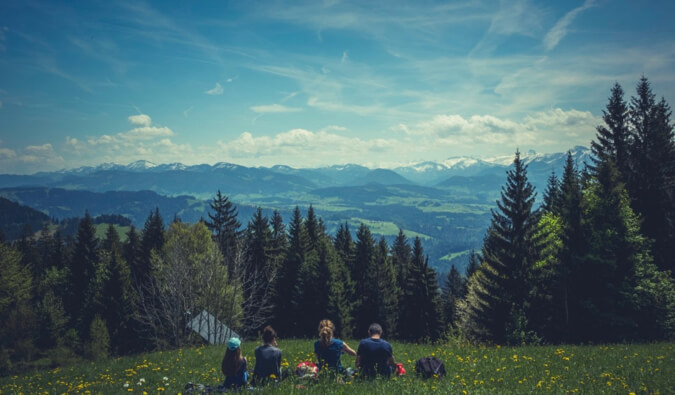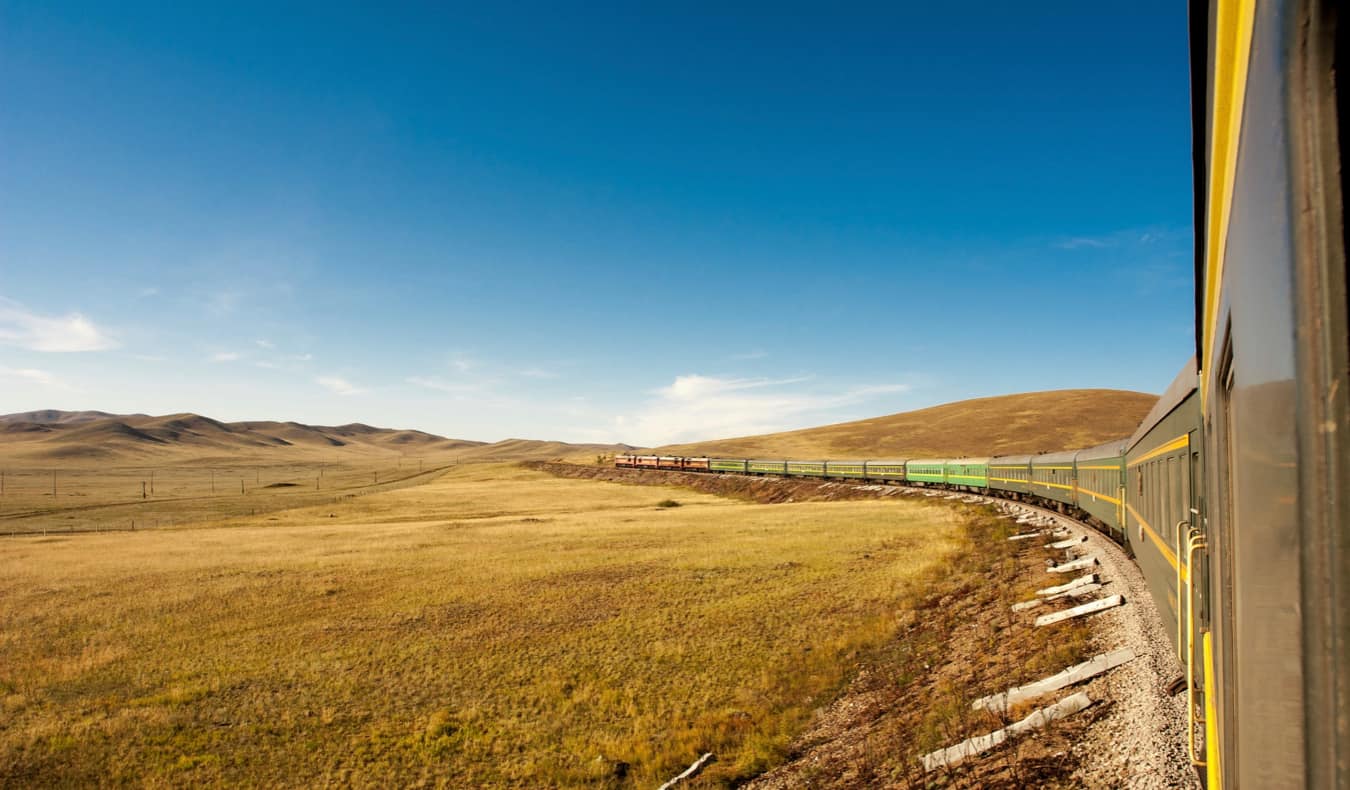
Last Updated: 08/14/21 | August 14th, 2021
I’ve always wanted to travel on the Trans-Siberian railway. It seems like an amazing adventure that literally spans the width of an entire continent. Until I make the journey myself, Katie Aune is here to share her experiences on the Trans-Siberian Railway.
In this guest post, Katie shares everything you need to know for the journey. She is a frequent traveler to Russia and knows this journey well. She’s here to share her wisdom with you to help you make the most out of your trip across Russia!
The Trans-Siberian Railway is one of the most famous train journeys in the world. For me, it was the highlight of the three months I spent in Russia. I traveled in reverse, going from Vladivostok to Moscow (most people start in Moscow) and went slowly, taking nearly a month to complete the journey and stopping in five cities along the way.
In this post, I’ll go over everything you need to know to plan your trip. Let’s get started!
Table of Contents
Step One: Planning Your Route
The traditional Trans-Siberian route stretches 9,288 kilometers between Moscow and Vladivostok. Two variations are also popular: the Trans-Mongolian (between Moscow and Beijing via Mongolia) and the Trans-Manchurian (between Moscow and Beijing, bypassing Mongolia). All three routes take 6–7 days if going non-stop.
Most travelers start their journeys in Moscow and go east. If you are anxious to interact with locals or improve your Russian skills, consider starting in Vladivostok or Beijing and heading west. You will likely encounter fewer tourists and more locals who are simply taking the train as a means of transportation, not as an adventure.
Beijing is probably a more attractive bookend to the journey than Vladivostok and likely provides easier onward connections — the best options from Vladivostok are to either fly back to Moscow (about $250 USD) or take a ferry to Japan or South Korea ($400 USD and up).
Chances are you will need to get a visa to travel to Russia, Mongolia, and China, so that may factor into which route makes the most sense for you. Rules vary by nationality, so I encourage you to visit the consulate website for your home country several months in advance to learn what is required.
Where to Stop Along the Way?
Unless you love the idea of spending a week straight on a train, I recommend making a couple of stops along the way. One of the best things about the Trans-Siberian is the opportunity it affords you to see more of Russia than just Moscow and/or St. Petersburg. The most interesting people I met and the best experiences I had along the way came not on the train, but during my stops, which included the following:
Kazan
Technically a detour from the Trans-Siberian route, every Russian I met ooh-ed and aah-ed when I told them I was stopping in this 1,000-year-old city, exclaiming how beautiful it is. Ignoring the foot of snow I trudged through while I was in town and the cloudy skies that loomed over me, I have to agree.
Kazan’s Kremlin is a UNESCO World Heritage site and in my opinion, has much more character than the Kremlin in Moscow. A large mosque dominates the scene, the main drag is lined with pine trees, and vendors gather along the Kremlin walls, selling mostly Islamic and Tatar-themed souvenirs. I spent several hours there, including a visit to the Museum of Islam, the Russian Orthodox church, and the natural history museum.
Yekaterinburg
Yekaterinburg is best known as the place where the last tsar, Nicholas II, and his family were murdered in 1918. My fascination with imperial Russian history made it a must-see — particularly Ganina Yama, the site where their bodies were discarded.
Now considered holy ground, seven chapels have been constructed on the site, one for each member of the royal family. I was most touched by a photo display showing the family in their daily lives — it really personalized the tragedy of their deaths.
Krasnoyarsk
The city itself is fairly bland, but my reason for stopping was to visit the Stolby Nature Reserve, a collection of fascinating volcanic rock pillars scattered throughout the wooded hills outside of the city. Visiting in late November, I was surprisingly not alone in braving subzero temperatures and sometimes knee-deep snow to hike around to all of the rock formations.
My guide, Vitaly, provided sometimes inappropriate stories about the rocks, a much-needed hand as we climbed a few for incredible views, and some cognac for warmth before we started!
Irkutsk
Irkutsk provides a jumping-off point to see Lake Baikal, the deepest lake in the world. If you are short on time, plan on a day trip to Listvyanka, a small town on the shores of Lake Baikal and about 90 minutes from Irkutsk.
If you have at least 3 days, Olkhon Island, the largest island in the lake, is a must-see. Its main town, Khuzhir, takes you back decades, with sandy dirt roads and cows roaming the streets. The ride there is half the fun — I shared the six-hour marshrutka (mini-van) trip to the island with a cute Belgian couple, a couple of babushkas, and a large Russian man chugging vodka out of a bottle stashed in his jacket pocket.
Once in Khuzhir, the couple and I split the cost of hiring a van and driver to take us around the island for an afternoon. Dipping my hand in the near-frozen lake, sliding on the ice that formed on its shores, and playing in the fresh snow on the north end of the island provided some of my best memories from my entire time in Russia.
Ulan Ude
Just an eight-hour train ride from Irkutsk and not far from the Mongolia border, Ulan Ude is the capital of Buryatia, home to Russia’s largest indigenous people, the Buryats. While I only had a day and a half there, I made the most of it, visiting the open-air museum just outside of town, stopping at a small museum on the history of Buryatia (some explanations in English), and enjoying the sunset from one of the highest points in Ulan Ude.
Ulan Ude is also a center of Buddhism in Russia. I hired a guide (about $12 USD/hour) to accompany me to the Buddhist monastery in Ivolga, about 40 minutes outside of the city. She taught me the basics of Buddhism and, being a Buryat, she gave me insight into their culture. It was well worth the price!
Step Two: Booking Your Tickets
If you are on a tight schedule, it makes sense to book your tickets ahead of time. Tickets can be issued up to 45 days in advance and many travel agencies can do this for you. I used Real Russia and highly recommend them — they can also help with obtaining a letter of invitation for visa purposes. It is also possible to book online yourself at www.poezda.net if you can read a little Russian.
For more flexible travelers, you can purchase your tickets at the stations as you go along. However, be prepared for the possibility that the train you want may already be sold out, and don’t be surprised if none of the cashiers speak any English. And schedules posted at the stations will be on Moscow, not local, time.
Most trains offer three classes of sleeper service: spalny vagon (1st class), kupe (2nd class), and platskartny (3rd class). Spalny vagon compartments have just two berths, with both beds at the lower level. Kupe are four-berth compartments consisting of two upper and two lower bunks. Finally, platskartny are open six-berth compartments with both upper and lower bunks.
Both spalny vagon and kupe have doors that lock, while platskartny compartments are open — this makes third class a little more social, but a little less secure.
Step Three: How Much Should You Budget?
How much you spend on your train journey will depend on all of the factors mentioned above, but I would say around $1,000 for tickets, accommodations, and food is a good starting point.
For example, booking through Real Russia, a kupe ticket from Moscow to Vladivostok might run about $900, while platskartny would be less than half, at just $360. On the other hand, splurging on first-class would cost you nearly $1,800. Prices for the nonstop trip to Beijing are similar. You can save up to 33% by taking one of the lower-quality passenger trains instead of the cosmetically nicer firmenny trains.
Note that breaking up the journey into separate legs may add some additional cost to your trip. For example, making stops in both Yekaterinburg and Irkutsk en route to Vladivostok would increase the total to $1,130 for kupe.
Price can also vary by day and time of departure, so if you are on a tight budget, be sure to play around with the schedules and note that not all types of trains are available on all routes or run on all days. Russian Railways offered a sale this fall that offered up to 50% off fares booked at least 30 days in advance but also imposed a 5% penalty on tickets purchased less than 10 days before departure. Keep an eye out for similar deals in the future.
What to Expect on the Train
When I boarded my first train, I felt a bit lost. Everyone around me seemed to have their routines down, from the clothes they changed into and the food they neatly set out on the small table, to the way they effortlessly made up their bed. I just tried to watch and follow their lead, and by the time I departed on my second leg, I felt like an old pro.
Toilets Each carriage has a toilet on each end, and they will be locked shortly before, during, and shortly after most station stops (and border crossings if you’re heading into China or Mongolia). The toilet doors usually have a schedule showing these closures. Despite my fears, they were kept quite clean and well stocked with toilet paper (though this is not always the case, so be prepared with your own toilet paper and hand sanitizer).
Food and water: You will find a samovar with boiling water on one end of the car, usually opposite the attendant’s compartment. If you bring your own water bottle, you can also refill it with drinkable water from the attendant. While food is available for purchase in the dining car and from vendors roaming the halls, it can be overpriced and the selection may be limited. You may be better off bringing your own provisions, especially for a multi-day journey.
Electronics: Outlets for charging cell phones and the like are available in the hallways, though some of the newer cars have their own plugs. Most carriages have fold-down seats so you can sit with your device as it charges, although it was not uncommon for people to leave theirs hanging unattended.
During my time on the train, I shared my kupe compartment with Russians ranging from businessmen and babushkas to members of a girls’ volleyball team. Some of my “roommates” boarded and went straight to sleep; others were traveling with people in other compartments and spent most of their time elsewhere. One guy stood in the hallway staring out at the passing landscape for hours at a time. Just a few really wanted to talk.
A babushka flashed her gold teeth as she rambled nonstop to anyone who would listen. An orphanage teacher was wonderfully patient as I practiced my Russian with her over our two days together, while an engineer was anxious to try out his English, paging through my dictionary and asking me carefully formulated questions. None were looking to party — the drink of choice for most was tea, not vodka, which is contrary to many of the stories you hear about the Trans-Siberian.
By the end of my journey, I was exhausted, relieved, satisfied, and immensely grateful. My fears prior to the trip were unfounded, the people I met were some of the friendliest in my three months in Russia, and the experiences were unforgettable.
And back in Moscow, sharing my stories with friends there, I began to really appreciate the fact that I had just seen more of Russia in one month than most Russians will ever see in a lifetime.
Traveling on the Trans-Siberian Railway is truly a magical experience and I hope this guide helps you in your planning!
Katie Aune is a Minnesota native and former attorney who recently quit her job in nonprofit fundraising to spend a year volunteering and traveling through the 15 countries of the former Soviet Union. You can follow her adventures on Katie Aune or on Twitter @katieaune.
Book Your Trip: Logistical Tips and Tricks
Book Your Flight
Use Skyscanner or Momondo to find a cheap flight. They are my two favorite search engines because they search websites and airlines around the globe so you always know no stone is left unturned. Start with Skyscanner first though because they have the biggest reach!
Book Your Accommodation
You can book your hostel with Hostelworld as they have the biggest inventory and best deals. If you want to stay somewhere other than a hostel, use Booking.com as they consistently return the cheapest rates for guesthouses and cheap hotels. My favorite places to stay are:
Don’t Forget Travel Insurance
Travel insurance will protect you against illness, injury, theft, and cancellations. It’s comprehensive protection in case anything goes wrong. I never go on a trip without it as I’ve had to use it many times in the past. My favorite companies that offer the best service and value are:
- Safety Wing (for everyone below 70)
- Insure My Trip (for those over 70)
- Medjet (for additional repatriation coverage)
Looking for the Best Companies to Save Money With?
Check out my resource page for the best companies to use when you travel. I list all the ones I use to save money when I’m on the road. They will save you money when you travel too.
